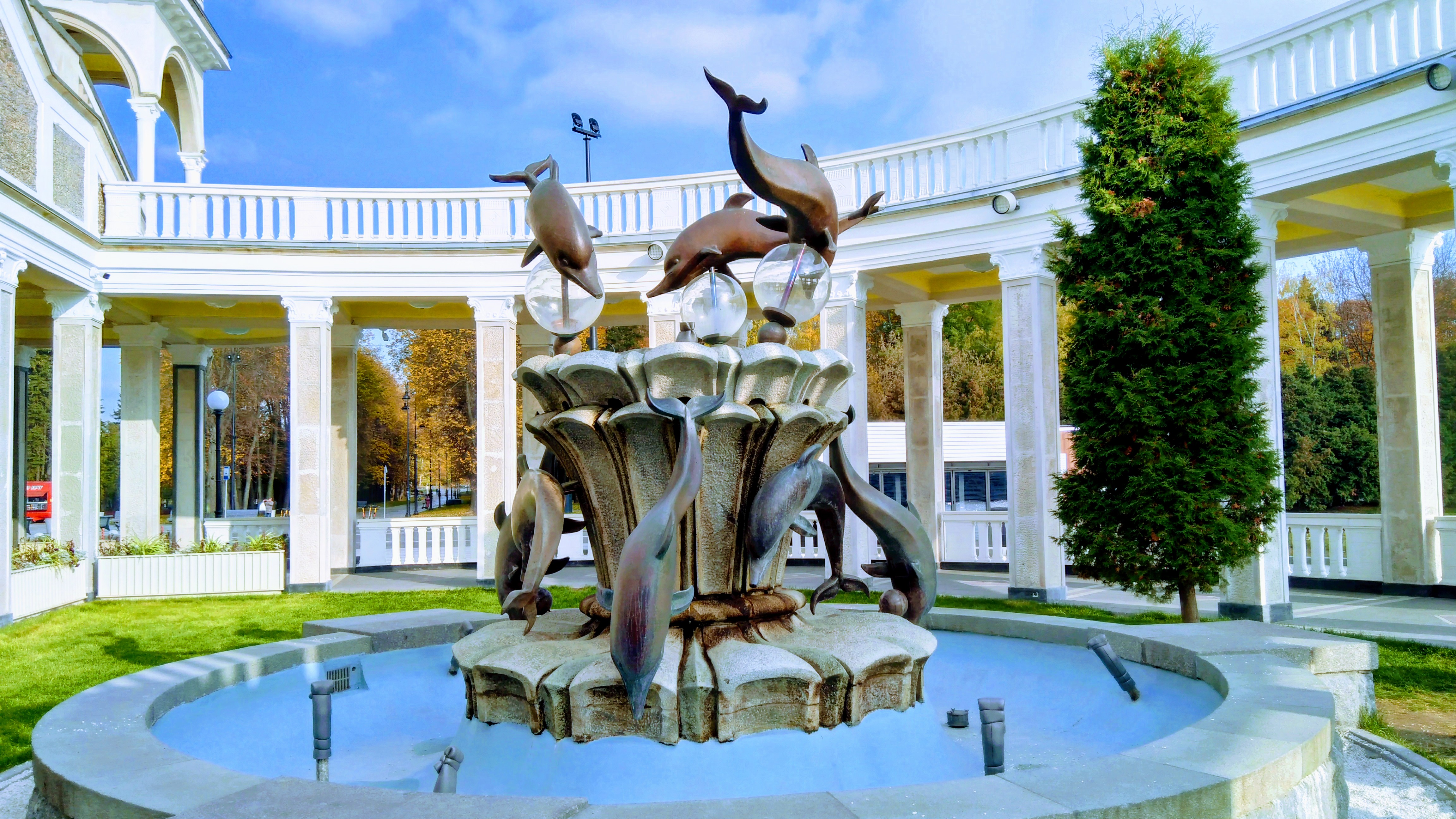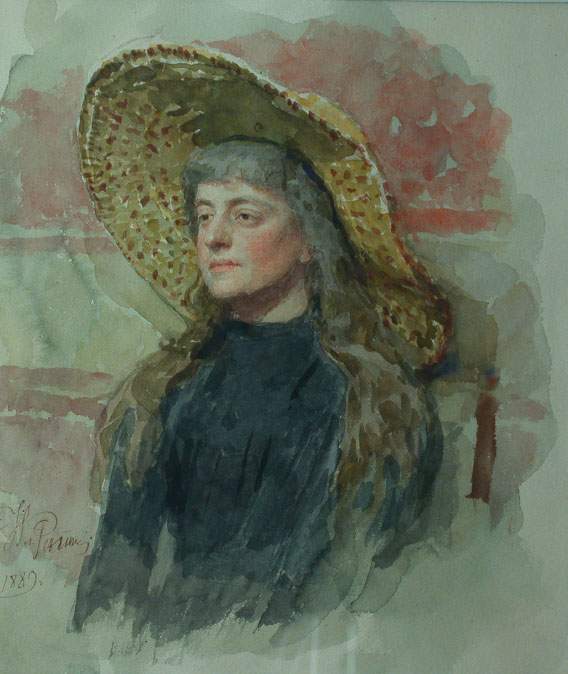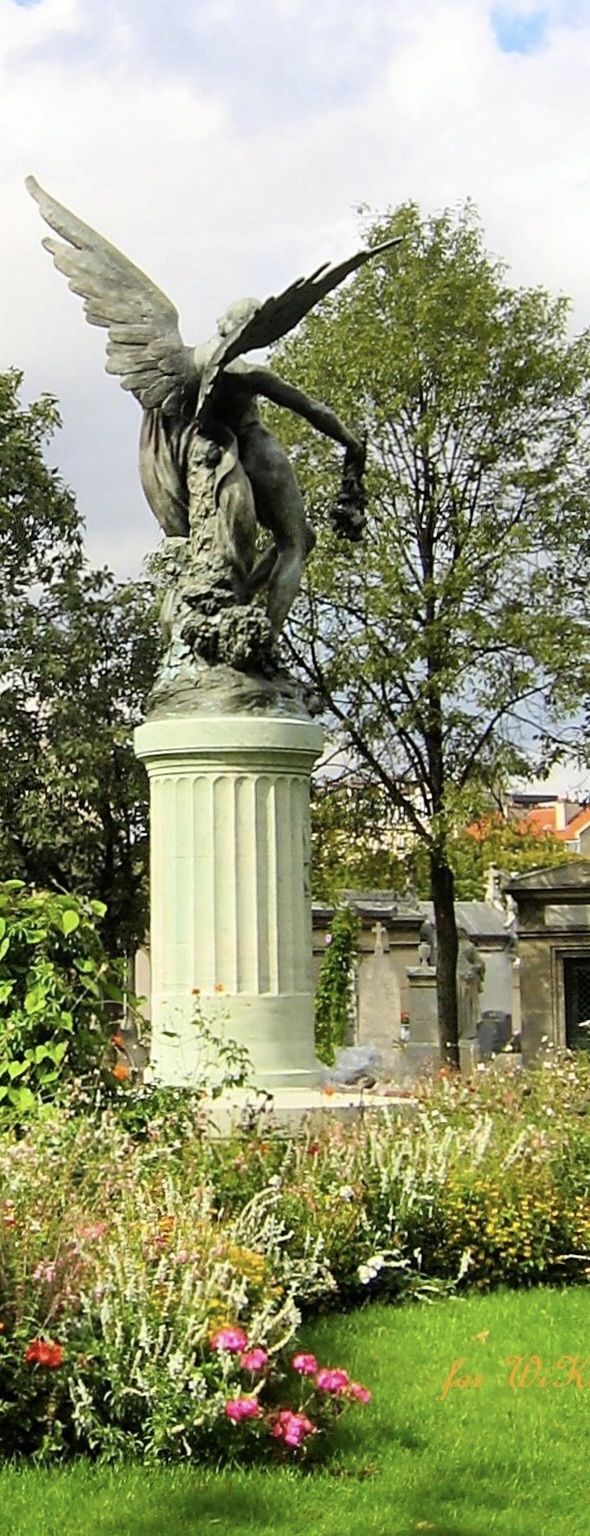|
Ivan Efimov
Ivan Efimov (russian: Иван Семёнович Ефимов 11 February 1878 – 7 January 1959) was a Russian sculptor. Along with his wife, Nina Simonovich-Efimova, the couple founded the tradition of Soviet puppet theater. Since 1958 he has been an Honorary member of UNIMA (International Puppetry Association). In addition to puppet design, Efimov was noted for his book illustration and sculpture. He created pieces for the Central Museum of Ethnology, the North River Terminal, several metro and railway stations and the Grand Kremlin Palace. Internationally his sculptures were awarded gold medals in 1937 at the Paris World Exhibition and a silver medal at the World Exhibition in Brussels, and in Russia he was honored as both an Artist of the Russian Soviet Federative Socialist Republic (RSFSR) and the People’s Artist of the RSFSR. Early life Ivan Semyonovich Efimov was born on 11 February 1878 in Moscow. His father, Semyon Grigorievich Efimov, was a government official and ... [...More Info...] [...Related Items...] OR: [Wikipedia] [Google] [Baidu] |
Moscow
Moscow ( , US chiefly ; rus, links=no, Москва, r=Moskva, p=mɐskˈva, a=Москва.ogg) is the capital and largest city of Russia. The city stands on the Moskva River in Central Russia, with a population estimated at 13.0 million residents within the city limits, over 17 million residents in the urban area, and over 21.5 million residents in the metropolitan area. The city covers an area of , while the urban area covers , and the metropolitan area covers over . Moscow is among the world's largest cities; being the most populous city entirely in Europe, the largest urban and metropolitan area in Europe, and the largest city by land area on the European continent. First documented in 1147, Moscow grew to become a prosperous and powerful city that served as the capital of the Grand Duchy that bears its name. When the Grand Duchy of Moscow evolved into the Tsardom of Russia, Moscow remained the political and economic center for most of the Tsardom's history. When th ... [...More Info...] [...Related Items...] OR: [Wikipedia] [Google] [Baidu] |
Elizaveta Nikolaevna Zvantseva
Elizaveta Nikolaevna Zvantseva (russian: link=no, Елизавета Николаевна Званцева 18 November 1864 OS/30 November 1864 (N. S.)–22 August 1921) was a Russian painter and art instructor who founded "the most progressive art school in pre-1917 Russia". Among alumni of the school were Marc Chagall, Elena Guro, and . Early life Elizaveta Nikolaevna Zvantseva was born on 30 November 1864 on her family's estate Tartalee (russian: link=no, Тарталеи) near Nizhny Novgorod on the outskirts of Moscow to Nikolai Zvantsev and his wife, who was the daughter of Nikolai Polevoy. Polevoy, Zvantseva's maternal grandfather was a noted Russian historian and writer. On her paternal side, her great-great grandfather was an Ottoman pasha who had been killed at the battle of Zhvanets in 1769 during the 5th Russo-Turkish War. The pasha's son had been made a ward of Tsar Paul I of Russia and given the name Peter Pavlovich Zhvantsov, which later changed to Zvantsov an ... [...More Info...] [...Related Items...] OR: [Wikipedia] [Google] [Baidu] |
Svomas
Svomas or SVOMAS (russian: Свомас or СВОМАС), an abbreviation for ''Svobodnye gosudarstvennye khudozhestvennye masterskiye'' (russian: Свободные Государственные художественные мастерские) (Free State Art Studios), was the name of a series of art schools founded in several Russian cities after the October Revolution The October Revolution,. officially known as the Great October Socialist Revolution. in the Soviet Union, also known as the Bolshevik Revolution, was a revolution in Russia led by the Bolshevik Party of Vladimir Lenin that was a key mome .... The Moscow Svomas was founded in 1918, replacing the Stroganov Moscow State Academy of Arts and Industry (which became the First Free Art Studio), and the Moscow School of Painting, Sculpture, and Architecture (which became the Second Free Art Studio). In 1920, the school was replaced by Vkhutemas design school. The Petrograd Svomas was created in 1919 by rena ... [...More Info...] [...Related Items...] OR: [Wikipedia] [Google] [Baidu] |
October Revolution
The October Revolution,. officially known as the Great October Socialist Revolution. in the Soviet Union, also known as the Bolshevik Revolution, was a revolution in Russia led by the Bolshevik Party of Vladimir Lenin that was a key moment in the larger Russian Revolution of 1917–1923. It was the second revolutionary change of government in Russia in 1917. It took place through an armed insurrection in Petrograd (now Saint Petersburg) on . It was the precipitating event of the Russian Civil War. The October Revolution followed and capitalized on the February Revolution earlier that year, which had overthrown the Tsarist autocracy, resulting in a liberal provisional government. The provisional government had taken power after being proclaimed by Grand Duke Michael, Tsar Nicholas II's younger brother, who declined to take power after the Tsar stepped down. During this time, urban workers began to organize into councils (soviets) wherein revolutionaries criticized the pro ... [...More Info...] [...Related Items...] OR: [Wikipedia] [Google] [Baidu] |
World War I
World War I (28 July 1914 11 November 1918), often abbreviated as WWI, was one of the deadliest global conflicts in history. Belligerents included much of Europe, the Russian Empire, the United States, and the Ottoman Empire, with fighting occurring throughout Europe, the Middle East, Africa, the Pacific, and parts of Asia. An estimated 9 million soldiers were killed in combat, plus another 23 million wounded, while 5 million civilians died as a result of military action, hunger, and disease. Millions more died in genocides within the Ottoman Empire and in the 1918 influenza pandemic, which was exacerbated by the movement of combatants during the war. Prior to 1914, the European great powers were divided between the Triple Entente (comprising France, Russia, and Britain) and the Triple Alliance (containing Germany, Austria-Hungary, and Italy). Tensions in the Balkans came to a head on 28 June 1914, following the assassination of Archduke Franz Ferdin ... [...More Info...] [...Related Items...] OR: [Wikipedia] [Google] [Baidu] |
Ménagerie Du Jardin Des Plantes
The ''ménagerie du Jardin des plantes'' is a zoo in Paris, France, belonging to the botanical garden '' Jardin des Plantes''. Founded in 1794, largely with animals brought from the royal zoo of the Palace of Versailles, abandoned because of the French Revolution, it is the second oldest zoological garden in the world (after Tiergarten Schönbrunn). Today it does not have very large animals like elephants, but a lot of rare smaller and medium-sized mammals and a variety of birds and reptiles. The location The zoo is located close to the left bank of the Seine in the 5th arrondissement, near the centre of Paris. It takes up about one third of the Jardin des Plantes. From herb garden to menagerie The botanical garden In the beginning the term ''Jardin des Plantes'' referred only to a botanical garden of , created and built by the royal physicians Jean Herouard and Guy de La Brosse. It therefore became known as ''the royal herb garden''. Created in 1626 and opened for the p ... [...More Info...] [...Related Items...] OR: [Wikipedia] [Google] [Baidu] |
Montparnasse
Montparnasse () is an area in the south of Paris, France, on the left bank of the river Seine, centred at the crossroads of the Boulevard du Montparnasse and the Rue de Rennes, between the Rue de Rennes and boulevard Raspail. Montparnasse has been part of Paris The area also gives its name to: * Gare Montparnasse: trains to Brittany, TGV to Rennes, Tours, Bordeaux, Le Mans; rebuilt as a modern TGV station; * The large Montparnasse – Bienvenüe métro station; * Cimetière du Montparnasse: the Montparnasse Cemetery, where, among other celebrities, Charles Baudelaire, Constantin Brâncuși, Jean-Paul Sartre, Simone de Beauvoir, Man Ray, Samuel Beckett, Serge Gainsbourg and Susan Sontag are buried; * Tour Montparnasse, a lone skyscraper. The Pasteur Institute is located in the area. Beneath the ground are tunnels of the Catacombs of Paris. Students in the 17th century who came to recite poetry in the hilly neighbourhood nicknamed it after "Mount Parnassus", home to the nin ... [...More Info...] [...Related Items...] OR: [Wikipedia] [Google] [Baidu] |
Elizaveta Kruglikova
Elizaveta Sergeyevna Kruglikova (Russian: Елизавета Сергеевна Кругликова; 31 January (Old Style and New Style dates, O.S. 19 January) 1865 – 21 July 1941) was a Russian-Soviet painter, etcher, Silhouette, silhouettist and Monotype, monotypist. Biography She was born in Saint Petersburg to Sergey Nikolaevich Kruglikov (1832-1910) and his wife, Olga Yuliyevna Neyman (1836-1922). Her father was a military officer who was an amateur painter, and her grandfather, Nikolai Alexandrovich Kruglikov (1788–1868), was a professional painter. In 1880, she lived with her father in Poltava, where she first met artists associated with the Peredvizhniki and decided on art as a career. From 1890 to 1895, she attended classes at the Moscow School of Painting, Sculpture and Architecture, where she studied with Illarion Pryanishnikov, Sergei Korovin and Abram Arkhipov. [...More Info...] [...Related Items...] OR: [Wikipedia] [Google] [Baidu] |
Etching
Etching is traditionally the process of using strong acid or mordant to cut into the unprotected parts of a metal surface to create a design in intaglio (incised) in the metal. In modern manufacturing, other chemicals may be used on other types of material. As a method of printmaking, it is, along with engraving, the most important technique for old master prints, and remains in wide use today. In a number of modern variants such as microfabrication etching and photochemical milling it is a crucial technique in much modern technology, including circuit boards. In traditional pure etching, a metal plate (usually of copper, zinc or steel) is covered with a waxy ground which is resistant to acid. The artist then scratches off the ground with a pointed etching needle where the artist wants a line to appear in the finished piece, exposing the bare metal. The échoppe, a tool with a slanted oval section, is also used for "swelling" lines. The plate is then dipped in a bath of aci ... [...More Info...] [...Related Items...] OR: [Wikipedia] [Google] [Baidu] |
Filippo Colarossi
Filippo Colarossi (21 April 1841 in Picinisco – August 1906) was an Italian artist's model and sculptor who founded the Académie Colarossi in Paris between 1879–1880. He is claimed to have died on 25 August 1906 in Paris. however, Duval states that Colarossi died poor and alone in August 1906 in a little town near Naples. Émile-Bayard reports that Colarossi and his wife (unidentified/unconfirmed second wife; the first had died in 1896), having profited from the sale of a building plot in 1916, retired to Picinisco, his natal village, where they presumably stayed until their deaths. Fuss Amoré and des Ombiaux also maintain that Colarossi returned to Italy. Writing in 1924, they maintained that Colarossi had recently returned to Picinisco, having sold some works by the artist James Abbott McNeill Whistler (1834–1903). No female companion is mentioned in this latter source. Biography Leaving Italy Born to poor parents, farm labourer () Fiori Colarossi (1779–1853) and h ... [...More Info...] [...Related Items...] OR: [Wikipedia] [Google] [Baidu] |
Antoine Bourdelle
Antoine Bourdelle (30 October 1861 – 1 October 1929), born Émile Antoine Bordelles, was an influential and prolific French sculptor and teacher. He was a student of Auguste Rodin, a teacher of Giacometti and Henri Matisse, and an important figure in the Art Deco movement and the transition from the Beaux-Arts style to modern sculpture. His studio became the Musée Bourdelle, an art museum dedicated to his work, located at 18, rue Antoine Bourdelle, in the 15th arrondissement of Paris, France. Early life and education Émile Antoine Bourdelle was born at Montauban, Tarn-et-Garonne in France on 30 October 1861. His father was a wood craftsman and cabinet-maker. In 1874, at the age of thirteen, he left school to work in his father's workshop, and also began carving his first sculptures of wood. In 1876, with the assistance of writer Émile Pouvillon, he received a scholarship to attend the School of Fine Arts in Toulouse, though he remained fiercely independent and resisted the ... [...More Info...] [...Related Items...] OR: [Wikipedia] [Google] [Baidu] |
Sergei Volnukhin
Sergei Mikhailovich Volnukhin (1859–1921) was a Russian sculptor, best known for his instruction to a generation of Russian artists at the Moscow School of Painting, Sculpture and Architecture, teaching alongside Prince Paolo Troubetzkoy. Among Volnukhin's students: * Anna Golubkina (1889-1890) * Sergey Konenkov (1892-1896) * Nikolay Andreyev (1892-1901) * Alexander Matveyev (1899-1902) * Natalia Goncharova (1901-1904) * Stepan Erzia (1902-1906) * Aleksei Babichev (1907-1912) * Boris Korolev (circa 1910) *Isaac Itkind (1912-1913) * Arkady Plastov (1914-1917) Notable among his own work is the 1909 monument to Ivan Fyodorov in Moscow (with architect Ivan Mashkov.) Volnukhin's papers are held at the Tretyakov Gallery The State Tretyakov Gallery (russian: Государственная Третьяковская Галерея, ''Gosudarstvennaya Tretyâkovskaya Galereya''; abbreviated ГТГ, ''GTG'') is an art gallery in Moscow, Russia, which is considered th .... R ... [...More Info...] [...Related Items...] OR: [Wikipedia] [Google] [Baidu] |





.jpg)


